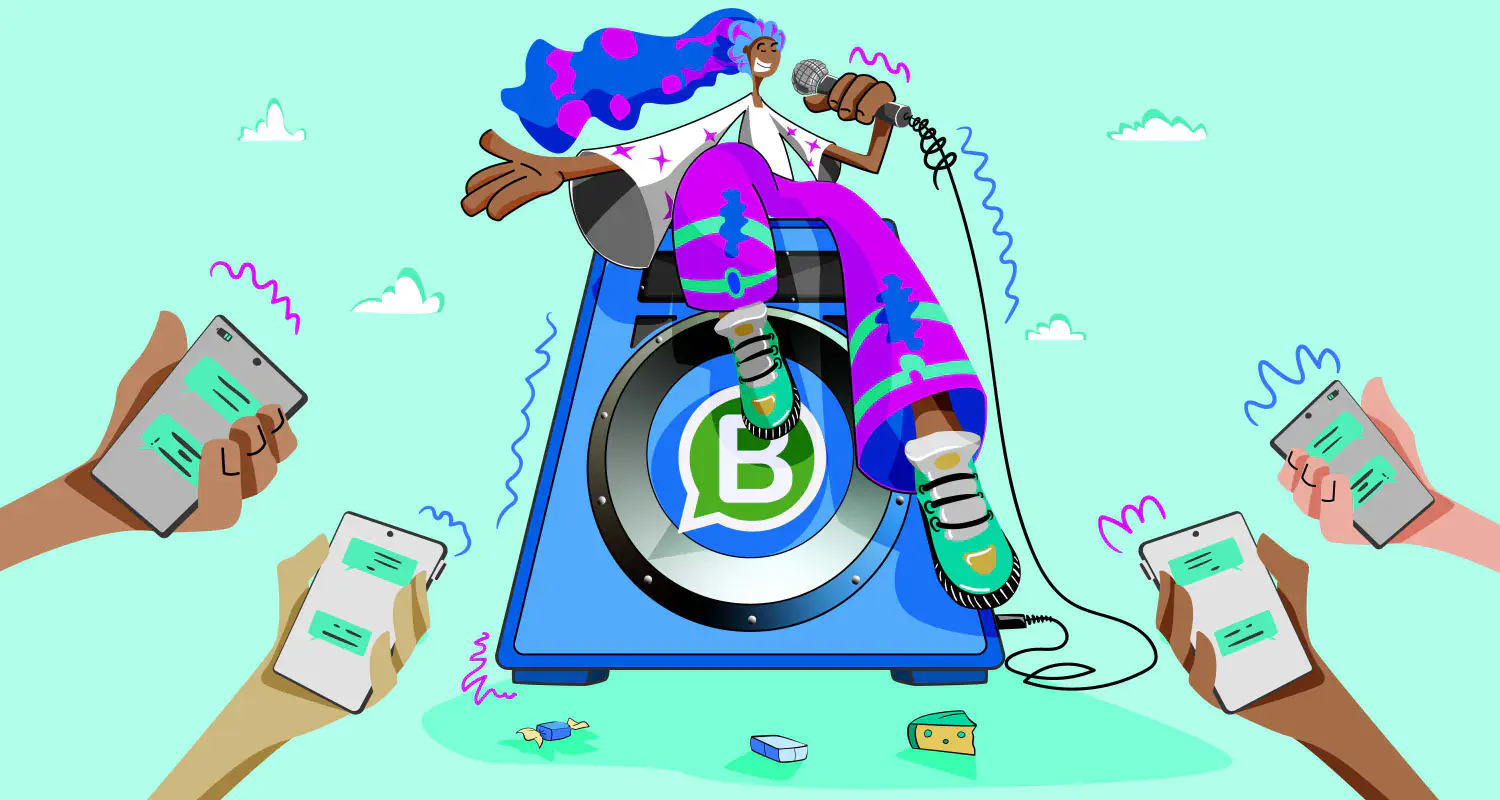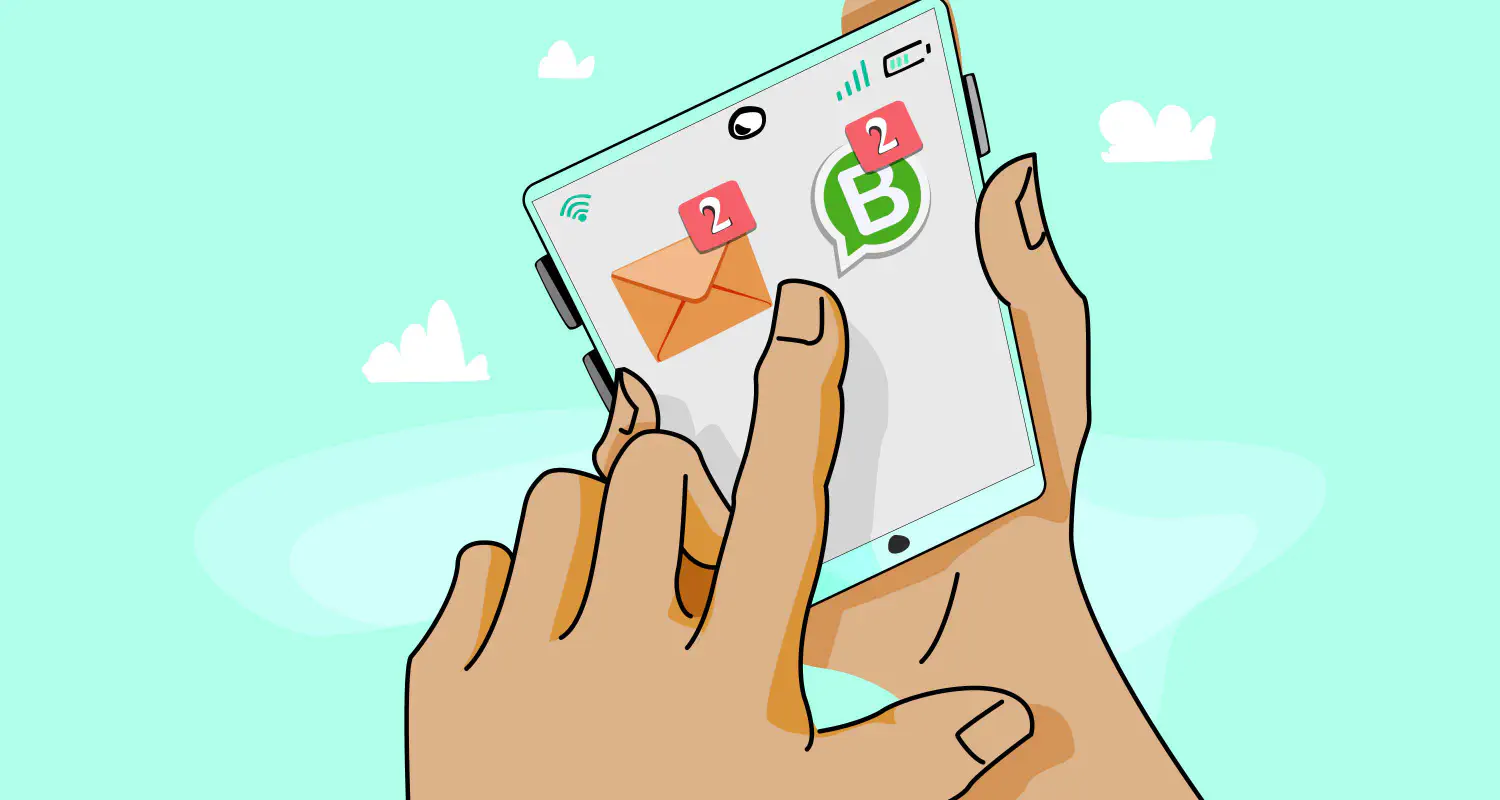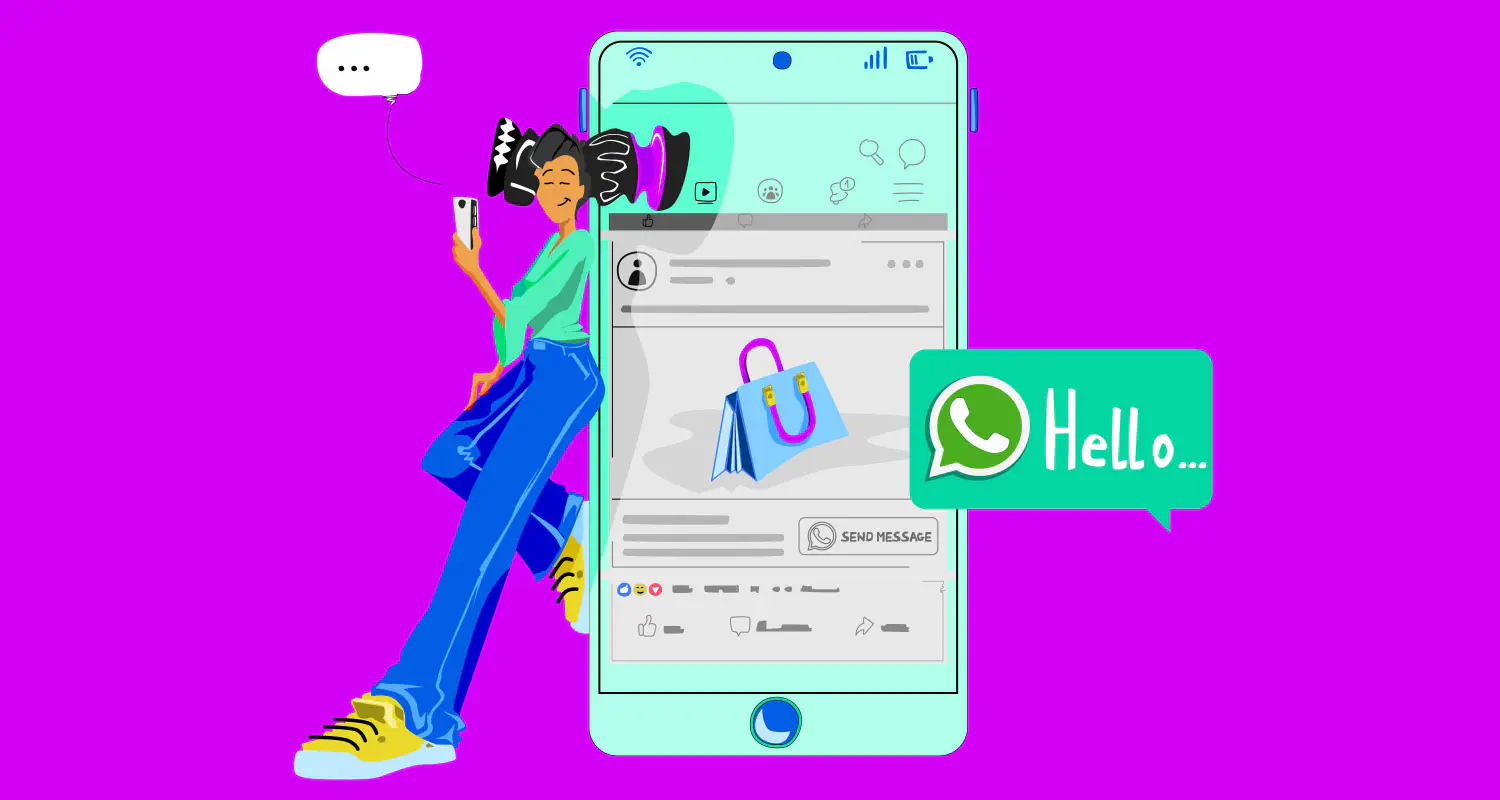How to Send WhatsApp Bulk Messages Without a Ban [+Templates]
![How to Send WhatsApp Bulk Messages Without a Ban [+Templates]](https://learn.rasayel.io/en/blog/whatsapp-bulk-messages/cover_hu8117970851652439586.webp)
Sending bulk messages on WhatsApp is one of the fastest ways to reach hundreds of potential customers at once. But in 2025, doing it wrong can get your number restricted or banned within hours.
That’s because WhatsApp has tightened its rules around mass messaging, especially for businesses using it as a lead generation channel. If you’re still relying on outdated methods like manual copy-paste, unofficial Chrome extensions, or spamming contacts who haven’t opted in, you’re risking your entire WhatsApp presence.
This guide is for sales, marketing, and growth teams who want to run legit, high-performing WhatsApp bulk campaigns that actually reach new leads without getting flagged.
Can you send “bulk” WhatsApp messages in 2025?
Yes, you can send WhatsApp bulk messages in 2025, but only if you use Meta-approved methods.
Bulk messages typically refer to:
- Sending messages to 1,000 or more recipients at once
- Often with a shared purpose (like lead outreach, event invites, or product promotions)
- Sent using pre-approved message templates
According to Meta, “bulk” doesn’t mean spamming random numbers. It means sending personalized messages at scale, usually to 1,000+ opted-in contacts, through verified channels.
Meta enforces strict rules to prevent spam and protect users:
- Templates required: You must use approved WhatsApp templates for any message initiated by your business.
- 24-hour rule: You can only freely message users within 24 hours of their last reply. Outside of that window, templates are required, according to the WhatsApp business messaging policy.
- Conversation categories and pricing: Meta charges per conversation, and pricing varies by category: marketing, utility, authentication, and service.
WhatsApp bulk messages on WhatsApp App vs Business API
You can send WhatsApp bulk messages on both the WhatsApp App and WhatsApp Platform, and choosing between them depends on the size of your business and your messaging needs.
Below is a breakdown of the three main methods: the official Business App, the Business API, and unofficial tools.
| Feature / Method | WhatsApp Business App | WhatsApp Business API | Unofficial tools |
|---|---|---|---|
| Bulk messaging capacity | Limited to 256 contacts per broadcast list | Thousands of messages per day based on tier | Claims unlimited sending, but often gets blocked |
| Opt-in management | Manual; users must be saved in contacts | Can be managed through opt-in flows and APIs | Often skips opt-in altogether (violates policy) |
| Templates for outbound | Not supported | Required and pre-approved by Meta | Bypassed, leading to higher ban rates |
| Automation and scheduling | Manual sending only | Full automation, segmentation, and scheduling via official Meta partners | Often clunky or spammy |
| CRM and system integration | Very limited | Easily integrates with CRMs, web forms, and customer data | Typically not supported or insecure |
| Compliance with Meta’s policies | Compliant but not built for scale | Fully compliant, secure, and scalable | Violates WhatsApp Terms of Service |
| Best for | Small teams updating existing customers | Sales and marketing teams running B2B campaigns | No one, it’s high risk and unsustainable |
How to send bulk WhatsApp messages via WhatsApp API
If you’re looking to send WhatsApp bulk messages at scale in 2025 without triggering Meta’s ban, you’ll need to follow a few key steps.
Let’s walk through the exact process we’ve seen work for sales and marketing teams across industries.
1. Define your objective and segment criteria
Before you open a CSV or write a single message, get clear on why you’re sending this campaign and to whom.
- What’s the goal? Lead generation, follow-up, product announcement?
- Who are you targeting? Think in terms of ICP (Ideal Customer Profile), lifecycle stage, or geographic region. This will help you with WhatsApp customer segmentation so that you get better engagement results from your campaign.
- What do they care about? Tailor your outreach based on behavior or interest, for example, leads who downloaded a guide but didn’t book a demo.
2. Prepare and upload your contact list
Once you’ve defined your customer segment, it’s time to get your contacts ready for import.
- Export your list from your CRM with relevant fields: name, phone number (in international format), email, company, region, etc.
- Format it into a CSV. Most WhatsApp API platforms accept simple formats.
- Upload it to your API platform and map the fields to use later as personalization tokens in your message templates.
Expert tip: Clean your data beforehand. Typos and missing country codes are one of the most common causes of failed delivery.
3. Create and submit message templates
Now comes the messaging part, and yes, Meta does require every outbound message to be sent using a pre-approved template.
- Templates should feel personal and relevant, even though they’re sent at scale.
- You can include variables (e.g., {{1}}, {{2}}) for name, company, pain point, etc.
- Choose the right category for your use case (Marketing is the one most bulk campaigns fall under)
Template example:
“Hi {{1}}, just a quick follow-up, would you be open to a quick call this week to see how we can help {{2}} solve {{3}}?”
For more, check out our free WhatsApp template library.
4. Set exit and stop rules
One of the most overlooked parts of a compliant bulk campaign is when to stop messaging someone. You need to automatically stop sequences and respect opt-out keywords like stop or unsubscribe.
Also, you should sync WhatsApp with your CRM so that if a deal progresses, they no longer receive marketing messages.
5. Schedule, throttle, and personalize at scale
Before sending bulk messages on WhatsApp, you need to consider timing and personalization. Both aspects can help your campaign succeed. First, you need to:
- Schedule messages based on time zones or known behavior patterns.
- Throttle your messages (e.g., 500/hour) to avoid sudden spikes that could get flagged.
- Use merge fields to personalize messages with name, company, product, or region.
- Use language variants if your list includes multilingual contacts.
6. Launch and monitor your campaign
Now that everything is in place, you can launch your campaign. Once it’s live, you need to start monitoring a few metrics to assess the success of the WhatsApp marketing campaign. Most importantly, you need to monitor delivery rates so that you know if any technical issues happen early.
Other than that, you can track reply and opt-out rates and monitor cost per conversation and conversations to understand ROI.
Bonus: How a marketing campaign flow works in Rasayel
Here’s how a typical campaign flow works for Rasayel users:
- You segment leads directly in your CRM (like HubSpot or Pipedrive)
- The list syncs automatically with Rasayel, you don’t need to export or import
- You select an approved message template and set up your sequence
- You define your stop rules (reply, deal closed, etc.) and hit schedule
- Messages go out on autopilot
You can monitor everything from replies to conversions in real time, with your CRM and WhatsApp working as one system.
How to send bulk messages via WhatsApp Business App
WhatsApp Business App isn’t built for serious bulk messaging, especially if you’re running high-volume campaigns or trying to reach cold leads. But if you’re just starting out or testing WhatsApp on a small scale, it can get the job done with a few limitations in place.
Here’s what to expect and how to work around its constraints.
1. Create a broadcast list (manually)
WhatsApp broadcasts are a built-in way to message multiple people at once. but only if they’ve saved your number. That’s a key detail. If your recipients haven’t added you to their contacts, your message won’t be delivered.
Here’s how to set up a basic broadcast:
- Tap the three dots on the home screen → “New broadcast”
- Select up to 256 contacts
- Write and send your message (it will be delivered as individual chats)
- Repeat the process if you need to send to more people
Some manual segmentation tips:
- Create groups by region, customer type, or status
- Use labels (e.g., “Leads – June,” “Cold Prospects”) to organize contacts
- Keep a spreadsheet to track who received what, since the app won’t
2. Know the tradeoffs
The Business App is simple, but it comes with some limitations for bulk use, including very poor WhatsApp automation features, no integrations, and more on this list:
- Limited reach: 256 contacts per list, no automation, and no multi-step sequences
- Manual everything: No scheduling, no CRM integration, no reply tracking at scale
- No analytics: You won’t know how many people read or clicked, unless you check each chat manually
- Spam risk: If you send generic, cold messages in bulk, you could get reported or blocked
When does the Business App make sense?
- You’re reaching out to a small, existing audience that already knows you
- You’re just testing the waters before committing to a full WhatsApp API setup
- You don’t need automation, analytics, or CRM sync
But if you’re serious about scaling your outreach, running multi-touch campaigns, or tracking real ROI, then it’s worth moving to the API.
Bulk messages compliance checklist
Before you send out a bulk message, quickly run through this list to make sure you’re not risking blocks, bans, or poor engagement:
- You’ve collected clear opt-in from every contact (no scraped or purchased numbers).
- Your opt-in message included language like “You agree to receive WhatsApp messages from [Your Business]”.
- Your message template is approved by WhatsApp and doesn’t contain spammy language.
- The message offers clear value to the recipient (not just a generic promo).
- You’re not sending too frequently.
- You’ve checked for country-specific rules around messaging times or content.
- Every message includes a simple opt-out line (e.g., “Reply STOP to unsubscribe”).
- You immediately remove unsubscribed contacts from future campaigns.
If you can check off everything here, you’re ready to send. If not, it’s better to pause than to risk getting flagged by Meta.
Metrics that matter for bulk messaging in B2B sales
If you’re sending WhatsApp bulk messages for B2B sales, here are the key metrics you should be tracking to know what’s working (and what’s not):
Delivery rate
This tells you whether your messages are actually reaching inboxes. A low rate might point to number issues (wrong format, inactive contacts) or account problems.
Read rate
WhatsApp gives you double blue ticks for a reason. If your messages are being delivered but not read, it may be a sign that your message preview or timing needs work.
Reply rate
This is where engagement starts. A high reply rate signals that your message hit the right pain point or value proposition. Low reply rates? Try A/B testing your hook or CTA.
Meetings booked %
Out of everyone who replied, how many booked a meeting? This is your lead-to-conversion signal. If it’s low, the handoff between reply and rep might need work.
Impact on deal velocity
Are leads you’ve reached via WhatsApp moving through the pipeline faster? If so, your messaging is working and might be accelerating revenue.
Conclusion
Bulk messaging on WhatsApp can be a powerful sales tool if done right. Whether you’re reaching 200 or 20,000 leads, success comes down to three things: compliance, clarity, and context.
If you use the WhatsApp Business API, segment smartly, personalize your outreach, and monitor key metrics, you’re building campaigns that convert.
Start with your audience, create valuable templates, and always respect the platform’s rules. When done well, bulk messages won’t feel like spam.
Frequently Asked Questions
You can reduce template rejections on WhatsApp if you:
- Keep templates clear, valuable, and non-promotional.
- Avoid phrases like free offer or limited time.
- Use proper formatting and make sure the message matches what users opted in for.

Esraa is a digital marketing specialist with 5 years of experience in B2B sales, email marketing, and ad campaigns. She now focuses on helping businesses use WhatsApp as a powerful marketing channel, combining her expertise in customer nurturing and funnel optimization with WhatsApp’s innovative features. Esraa writes about WhatsApp Business API strategies, B2B communication, and how marketers can use WhatsApp to drive sales and improve customer engagement.






